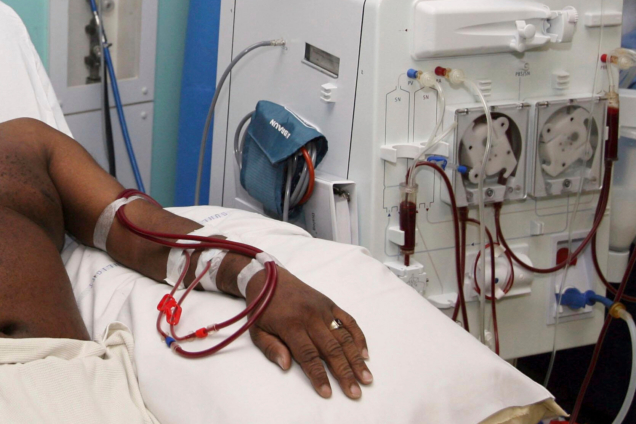In the wake of the public uproar against the increase in the cost of dialysis treatment for renal patients at the Korle-Bu Teaching Hospital, its Chief Executive Officer, Dr. Opoku Ware Ampomah, has told Joy News the facility will need a monthly subsidy of GH₵961,000 if it maintains the current charges without an increment.
In the past week, the conversation on dialysis treatment has been brought to the fore following the Korle-Bu Teaching Hospital’s unsuccessful 100% increment in the cost of dialysis treatment.
The hospital had blamed the removal of tax and import duty exemptions as the cause of the price hike.
According to KBTH, if the old charges are maintained, the dialysis facility would have to shut down in a matter of days.
Speaking on Kidney Health Matters on Joy News on Thursday, October 5, Dr. Ampomah said, “We have a GH₵4 million deficit, and then if we are to run at full capacity, we will need about GH₵961,000 subsidy every month to be able to maintain the current prices because of the numbers that we are doing. We are doing about 2000 dialysis.”
Either government provides that subsidy or we are allowed some reasonable increase so that’s the kind of discussions we are having.”
He says the facility is also counting on the benevolence of individuals and corporate Ghana to bear some of the cost.
“We are also looking for other Ghanaians because First Sky Group has done tremendously well by providing free dialysis by paying for 250 patients to have two sessions of dialysis every week throughout the year free of charge. So, other individuals and corporate Ghana can also join to ease the burden on the government “he noted.
Facts about kidney disease in Ghana
According to a pharmacist and Research Fellow at the Center for Democratic Development, CDD-Ghana, Dr. Kwame Asiedu Sarpong, based on current research, it is estimated that between 13% and 17% of Ghana’s population have some form of renal function impairment. This equates to between 4 million and 5.2 million citizens. Researchers suggest that, from this segment of the population, between 15,000 and 19,500 should be on dialysis.
The data available suggests that approximately 2,000 people are currently on dialysis. This means between 13,000 and 17,500 people are without treatment. These people will often seek alternative forms of treatment and access renal care only when the situation is acute. This has an impact on their quality of life and life expectancy.
All research suggests that the prevalence of chronic renal disease in Ghana has approximately doubled in the last 10 years with cases across the entire span of Ghana’s population age profile.
According to the Ministry of Health, Ghana’s outpatient per capita is 1.06, suggesting that on average Ghanaians see a primary care clinician once a year. In proactive health systems, this figure is around 4 (citizens see a clinician once every three months). The fallout is that for the majority of our population, there is only one chance a year for any diagnosis of renal failure to be made except in an emergency. Whilst in proactive health systems there are at least four chances to identify these patients.
Dialysis Machines
Nationwide, the total number of dialysis machines is approximately 300, with the majority in the Greater Accra and Ashanti Regions. Four regions do not have a single dialysis equipment. Citizens in these regions requiring dialysis must commute significant distances to seek care.
The cost of dialysis in Ghana ranges from GH₵300 to GH₵1000 per session. The median cost in government and quasi-government health facilities is GH₵400 (range GH₵300-GH₵600).
The average number of sessions required a week is 3. This means a patient requires approximately GHC1200 each week just to stay alive. If additional routine medication is added on an extra cost of GHC435 is required weekly. This brings the weekly cost to the patient to GHC1635 assuming they have no underlying conditions such as hypertension or diabetes.
This means the annual cost of staying alive is GH₵85,020 or GH₵7,085 a month.
According to the Ghana Statistical Services, 70% of working Ghanaians earn less than GH₵3000 a month or GH₵36,000 a year. This means should these workers or their dependents require dialysis, they will require 2.4 times their annual salary just to stay alive.
“The practical implication of these numbers is that over 90% of Ghanaians are priced out of dialysis care based on earnings. Could this explain why between 13,000 and 17,500 people requiring dialysis are without care? This is the reality of this crisis” according to Dr. Kwame Asiedu Sarpong.

